The popular Xianxia drama "Till The End Of The Moon" has adopted a large number of Dunhuang styles in costumes and makeup, which is different from conventional dramas. In addition to receiving a lot of praise, it has also made more people aware of and started to like Dunhuang costumes.
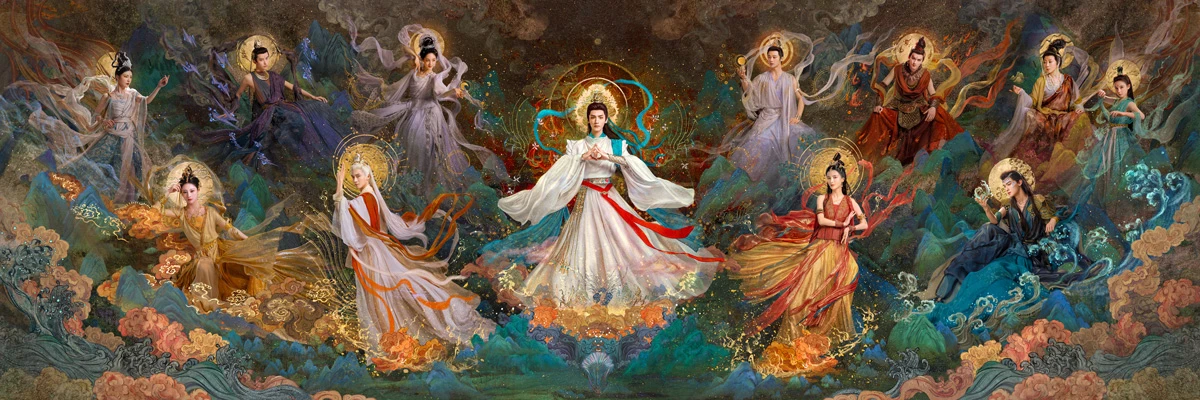
As for the modern art form that integrates with the Dunhuang style, there has long been one. "Silk Road Flower Rain" is a famous Chinese ethnic dance drama, which is created based on the Silk Road and Dunhuang murals. Since its birth in 1979, it has been continuously performed, keeping up with the times, and enjoying a great reputation. The dance drama takes Dunhuang as its main theme, and the dance costumes have a strong Dunhuang style.
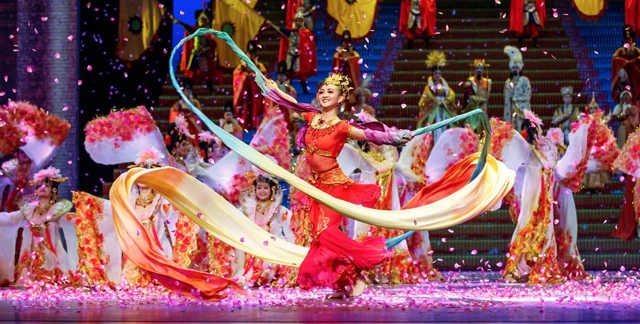
Moreover, the dance "Thousand-Hand Guanyin" at the 2005 China Spring Festival Gala received rave reviews, which is also in Dunhuang style. The artistic expression of Dunhuang themes is very popular among audiences, and there are also many Dunhuang-style dances and costumes in some dance variety shows.
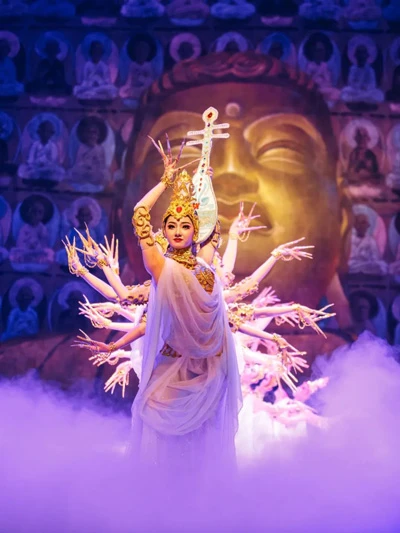

Naturally, Dunhuang-style Hanfu has also been very popular among consumers. If you have been paying attention to Hanfu, you must be familiar with Dunhuang costumes, but are Dunhuang costumes Hanfu? To answer this question, we first need to clarify the concepts of "Hanfu" and "Dunhuang style".
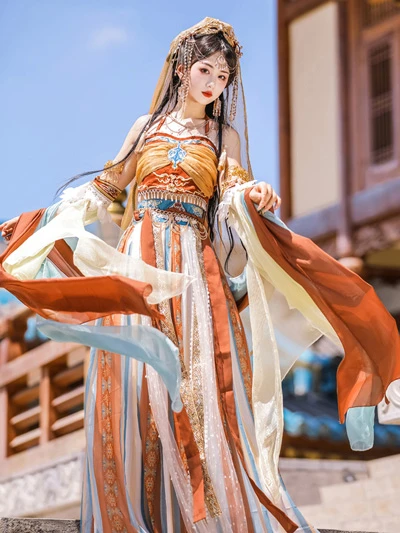
The Dunhuang culture is a crystallization of long-term exchanges and integration of various civilizations. Throughout the more than two thousand years of Chinese history since the Han Dynasty, Dunhuang has always been based on traditional Chinese civilization, constantly absorbing the achievements of civilization from other regions and ethnic groups. The diverse and integrated Dunhuang culture always inherits the essence of traditional Chinese culture, while also shining with the brilliant light of ancient Indian civilization, Persian civilization, and Greek civilization, becoming a widely recognized and distinctive regional culture.

Hanfu is the traditional clothing of the Han ethnic group and is a type of clothing. Dunhuang costume, on the other hand, is an artistic style formed by imitating and innovating ancient Dunhuang art, and Dunhuang murals are an important part of it. The two are concepts on different levels and do not necessarily have a connection. Therefore, not all Dunhuang costume is Hanfu.
As a result, many of the Dunhuang clothing we see today are not Hanfu. They merely adopt the design style of Dunhuang and incorporate Dunhuang's patterns and color elements. However, Dunhuang art was influenced by Hanfu for a long period of time in history. It formed its own unique style on the basis of integrating various ethnic cultures.
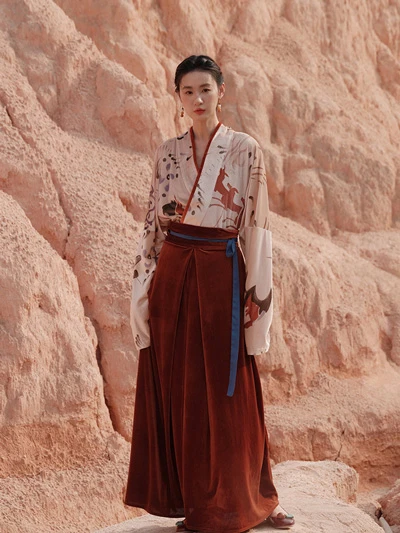
The Dunhuang Mogao Grottoes, founded in the second year of the Jianyuan era of the Former Qin dynasty (366 AD), has been continuously built and expanded from the Sixteen Kingdoms period to the Yuan dynasty, spanning over a thousand years of history. Dynasties including Northern Wei, Western Wei, Northern Zhou, Sui, Tang, Five Dynasties, Northern Song, Western Xia, and Yuan have all contributed to the construction of the grottoes. The frescoes and sculptures in the Dunhuang Grottoes contain rich and valuable images and information of medieval clothing.
Since the Han dynasty, a large number of immigrants from the Central Plains have settled in Dunhuang, forming a population mainly composed of Han people. During the more than 270 years of the Sixteen Kingdoms period, the customs and cultures of ethnic minorities had a great impact on Dunhuang. The clothing of people from different classes in the Dunhuang frescoes vividly reflects the characteristics of the times. The coexistence of Han and Hu clothing created a special phenomenon where the Han people followed the Hu clothing trend, while the Hu people followed the Han clothing trend, forming the main theme of cultural integration.
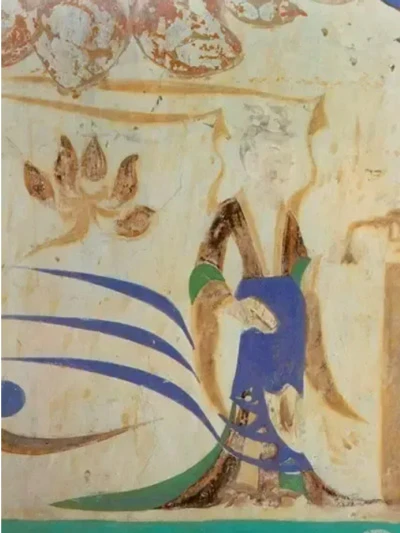
In the Sui Dynasty, the Mogao Caves murals prominently depicted the transition of clothing styles from simple and plain to luxurious and extravagant, and the incorporation of foreign elements. The prosperous Tang Dynasty was the most brilliant era in Chinese history, and Dunhuang cave art reached its peak during this time as well. Inheriting tradition, blending Han and Hu cultures, and pioneering innovation were the clothing styles reflected in the early Tang Dynasty Dunhuang murals. The clothing trend depicted in the early Tang Dynasty Dunhuang murals was mainly a fusion of Han and various ethnic groups in the Western Regions, and the Hu-style that greatly influenced Han clothing mainly came from the Western Regions along the Silk Road.
During the later period of the Tang Dynasty under the rule of the Tubo Kingdom, the clothing trend depicted in the Dunhuang murals was reversed. On one hand, it was significantly influenced by the Tubo ethnic group, while on the other hand, the deep-rooted traditional Han culture and the continuous infiltration of the Hu-style from the Western Regions were still factors that could not be ignored, constantly affecting the clothing style. During the period of the Guoyi Army rule in the late Tang Dynasty, the Tubo style gradually weakened, and the Han-style clothing trend returned and became prominent.
From the Five Dynasties onwards, China entered an era of rampant and domineering regional military governors, the clothing depicted in Dunhuang murals during this period was dominated by Tang and Song styles and trends. The literati class in the Central Plains during the Song Dynasty popularized the production of exquisite, restrained, and elegant clothing, which also spread to the Dunhuang region. From this period of history, we can see that Dunhuang art and Hanfu are closely related. It has long been influenced by Han ethnic clothing and has become an important source of inspiration for modern Hanfu design.
As for how Dunhuang art influences modern Hanfu design, this is mainly reflected in color matching and patterns. The color matching of Dunhuang murals is harmonious, with mysterious, gentle, and soft characteristics. In order to express the real life at that time and the propagation of Buddhism, most of the colors used were simple and bold. Warm colors such as ochre, gold, earth yellow, and dark brown are used in combination with cold colors such as green and blue, and then outlined with mural lines. The round flower pattern is one of the most common patterns in Dunhuang murals, and it often appears in the caisson. The round flower pattern can be further divided into the Bao Xiang Hua pattern and the round flower & lotus pattern.
During the Tang Dynasty, as Buddhism spread and flourished, the lotus was imbued with a sacred meaning, symbolizing the brilliance and sanctity of Buddhism. At the same time, the round flower pattern also often appeared on the statues or clothing of aristocrats who made offerings, often in a continuous swirling form, with a strong sense of rhythm.
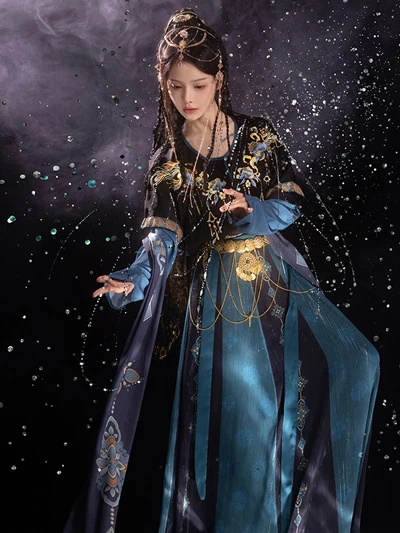
Therefore, as to whether the Dunhuang costume is Hanfu, it can be said that as an artistic style, the Dunhuang style does not necessarily have to be combined with Hanfu, but it is a very important style in Hanfu.
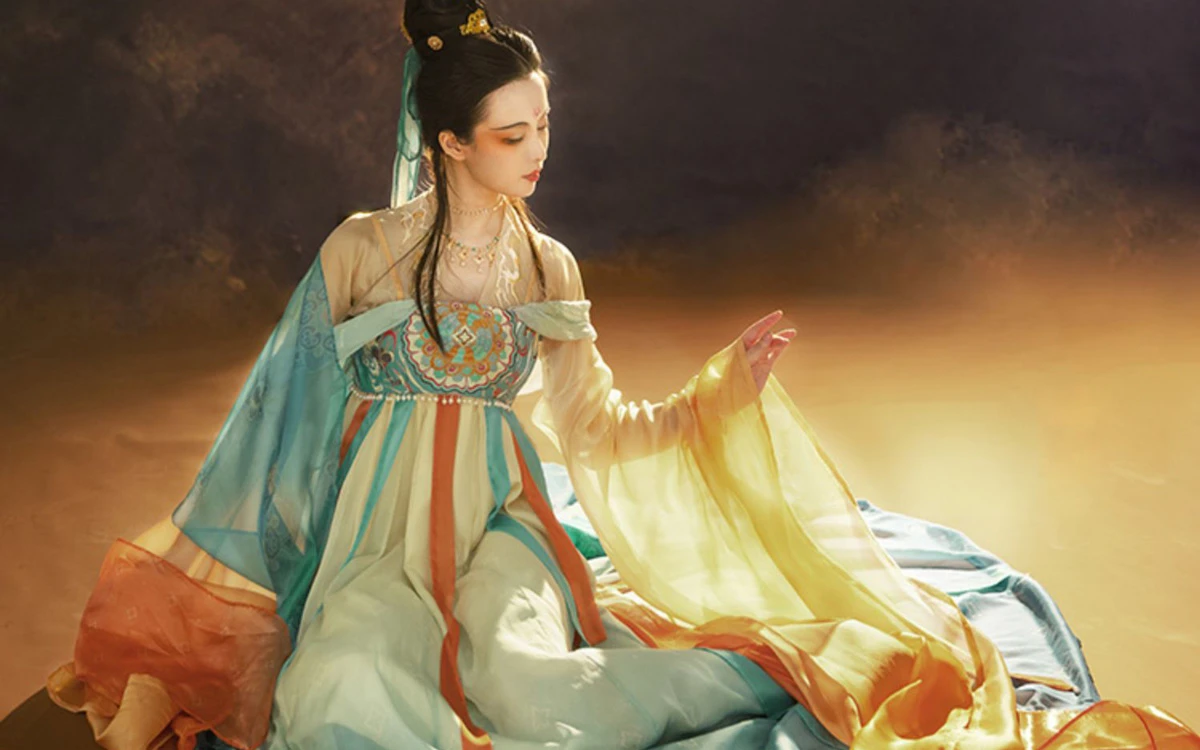
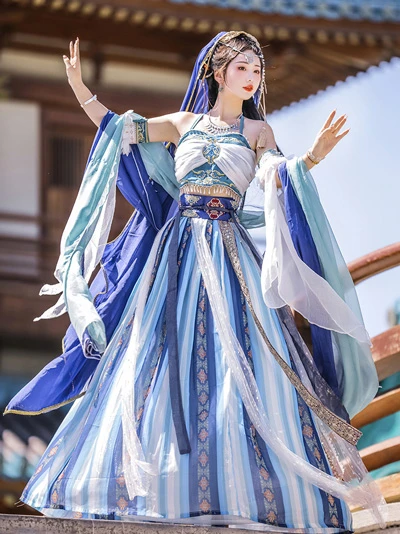
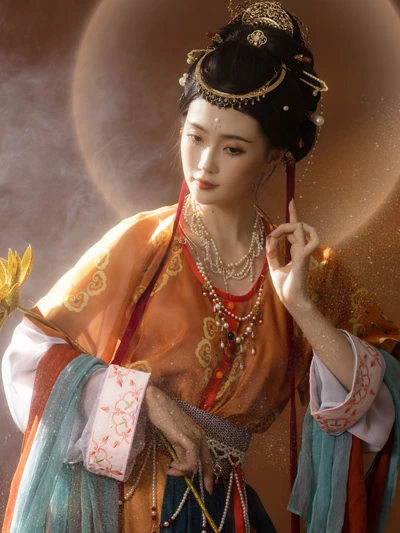
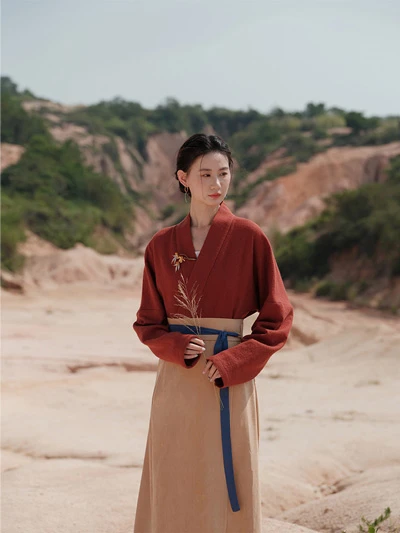
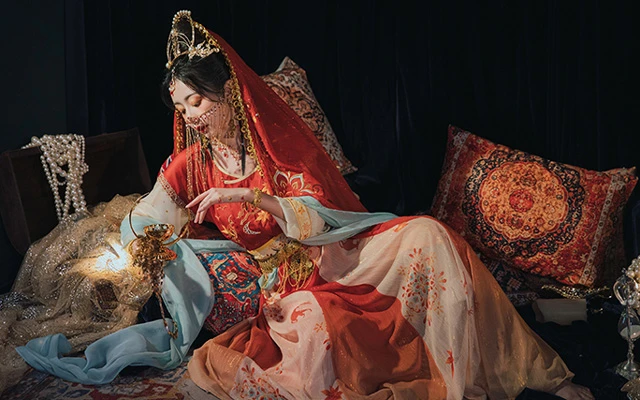
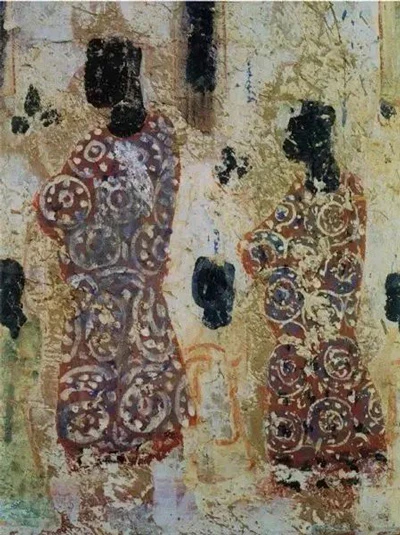
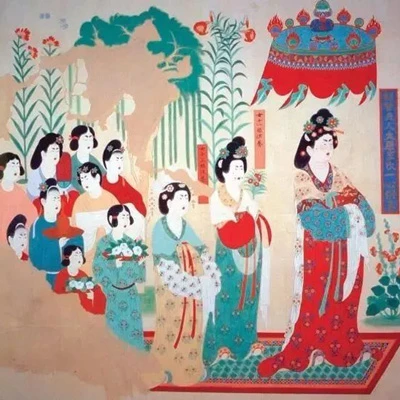


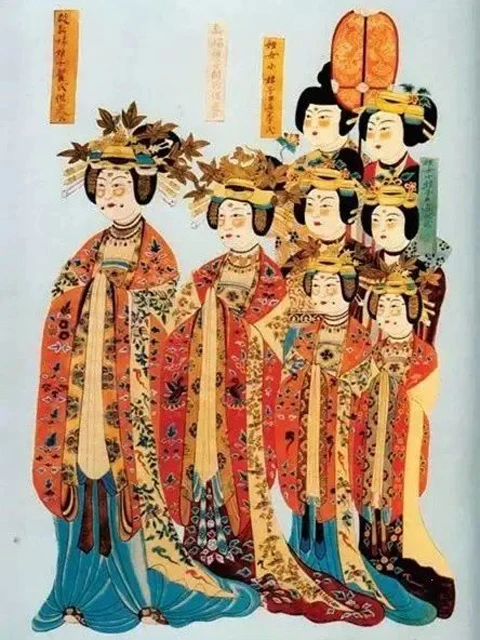
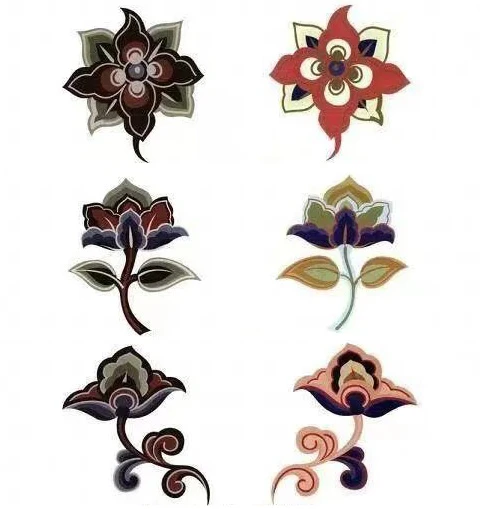
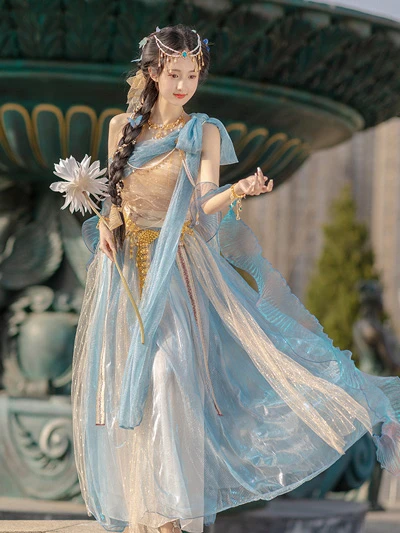


😍😍😍
Its Beautiful, and uniqe
Wow very nice
Thanks you for articel